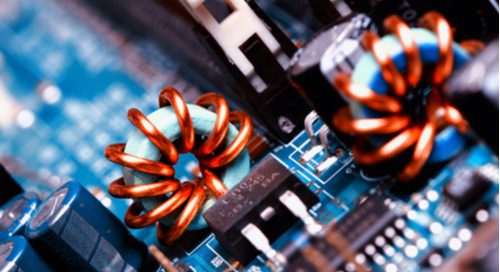
Would you design your board around this IC if you knew it wasn’t available? Use a search engine to check electrical component availability first.
If you’ve designed a PCB and waited until the design was finished to check electrical component availability, you know the headache involved in redesigning the board around available components. With the rapidly changing sourcing and manufacturing landscape in 2020, the mantra should be: check sources early and often. If you can identify your components early based on current sourcing data, you can eliminate any redesigns and ensure you can procure the components you need for your board.
So where is the best place to find components for your new system? You shouldn’t have to browse distributor websites to cobble together a BOM for your new board. If you can access sourcing information from multiple distributors early, you can prevent an unnecessary redesign and ensure you’ll meet your production goals in a timely manner. Here’s how we recommend going about sourcing components for your next PCB and what to look for in a components search engine.
When to Determine Electrical Component Availability
Every designer has some favorite components. This is especially true when you look at the range of MCUs, SoCs, programmable amplifier ICs for analog sensors, power management ICs, and much more. Embedded developers tend to gravitate towards their favorite components thanks to broad manufacturer support through SDKs and software libraries. Analog designers also tend to like specific components thanks to available circuit simulation tools and models from manufacturers.
There’s nothing wrong with sticking to your favorite components; if you know how to work with them quickly and you can cut down your design time, then you can produce a higher quality product. Always defaulting to your favorite components without checking availability puts you in danger of creating designs that can’t be sourced at the scale you need. The result is a costly redesign, where you have to find alternative parts and redesign portions of the board to accommodate them. In the case where you’ve included a high pin count IC without checking sources, you’ll need to perform extensive rerouting, both in the schematic and PCB layout.
The best time to source critical components is at the beginning of the design phase. By critical components, we mean those core ICs like MCUs, FPGAs, SoCs, SoMs, and anything else programmable. Many of these components, especially high pin count MCUs or integrated SoCs/SoMs, do not have perfect replacements. If one of these core components is unavailable, you may need to swap it with two or more components in order to bring the same functionality into your board.
If you want to streamline your design and sourcing processes into a single workflow, and you want to prevent a redesign, here are some of the best times to start looking for component sources.
- Before creating schematics: find the core components you need that don’t have perfect replacements first and start designing your system around these parts.
- After simulation or qualification: if you need to simulate portions of your design, it’s best to start with generic component models for non-critical components where possible, then source specific components (e.g., passives and basic amplifiers) that provide the desired functionality.
- After finishing your layout: by this point, you’ve already verified your critical ICs and passives are available, but it’s best to check that distributors are still able to provide the number of components you need for upcoming manufacturing runs.

Common components like these large inductors and capacitors can be placed in your schematics as simulation models before sourcing passives as this helps you determine the best component values to use.
When you’re ready to source your components, the right supply chain tools can help you gather the information you need for your ideal components. The right search engine serves plenty of other functions that aid your design process.
Find Available Components with the Right Search Engine
These days, you don’t have to spend all day browsing component distributor websites. An electronics search engine is designed to aggregate sourcing data from multiple authorized and unauthorized distributors in near real-time. This gives you the supply chain visibility you need before you create schematics, after simulations, and when you’re preparing for manufacturing.
A component search engine provides plenty of information that helps you plan your board and saves some design time for other tasks. There are many specialized and community search engines you can access (forums, GitHub, and Google included), but the best search engine for your components gives you access to some critical assets for your design:
- Symbols, 2D footprints, and 3D models. No one wants to spend hours creating CAD models for every component in their BOM. Instead of finding open-source libraries or relying on component creation services, you need access to verified symbols and footprints in vendor-specific and vendor-neutral file formats.
- Pricing and lead times. Designing around a component that has a 6-week lead time can be just as bad as using a component that is out of stock or obsolete. If you can get stocks and lead time data, you can accurately project whether you will meet production deadlines. Add pricing data into the mix, and you can now determine whether you will stick within your budget.
- Electrical specifications. When you can see electrical specifications in your search results, you can quickly identify suitable replacement components in the event your desired parts are unavailable. Data like packaging, input/output voltage and/or current, and other specifications should be visible directly in search results.
When you consider the availability of CAD models alongside sourcing data and specs, a free components search engine is the natural choice for sourcing. You won’t have to design footprints from datasheets, look on community websites for STEP models, or pay for a component creation service to get your design started.
When you need to check electrical component availability for your desired parts, or when you’re looking for alternative components that might provide the best functionality, try using the parts search features in Ultra Librarian. You’ll have access to verified CAD models in vendor-specific and vendor-neutral formats, and you can quickly import these models into popular ECAD applications. You’ll also be able to see up-to-date sourcing information from worldwide distributors. All the component data you’ll find on Ultra Librarian can be accessed at no cost and is verified from component manufacturers.
Ultra Librarian helps you build your component footprint libraries by compiling all your sourcing and component information in one place. Working with Ultra Librarian sets up your team for success to ensure any design is going through production and validation with accurate models and footprints to work from. Register today for free!








